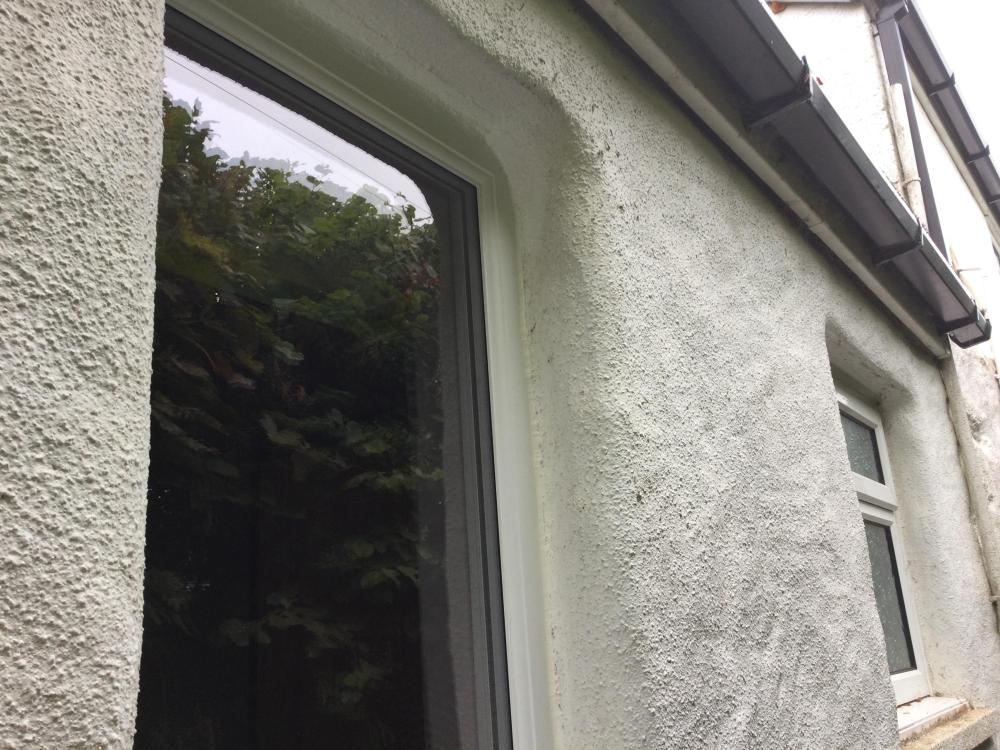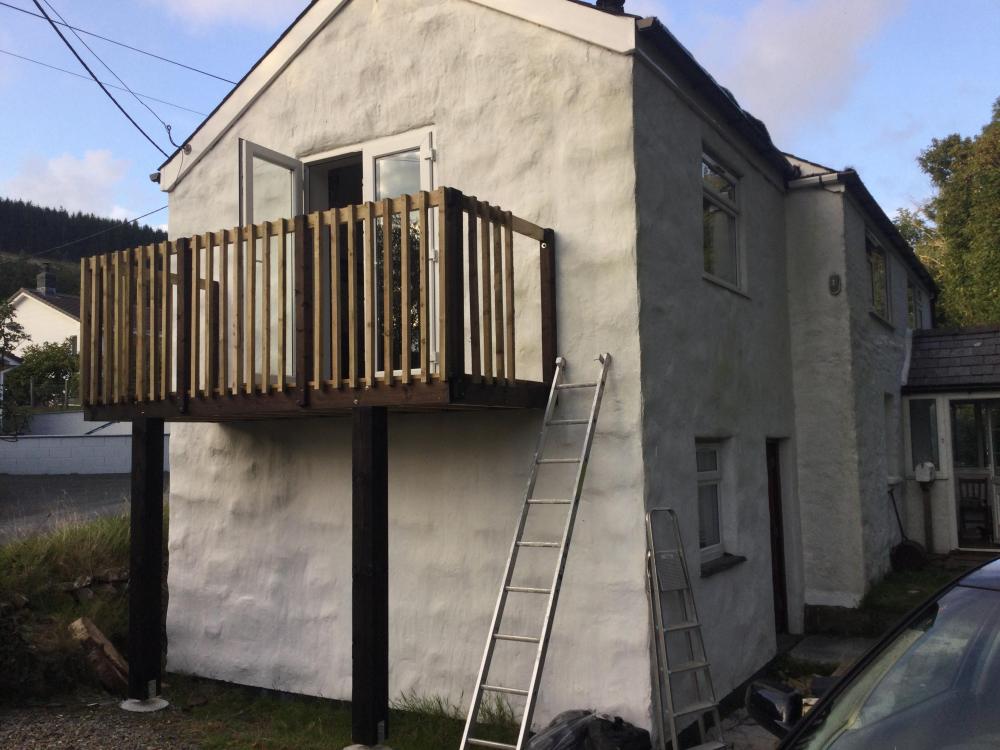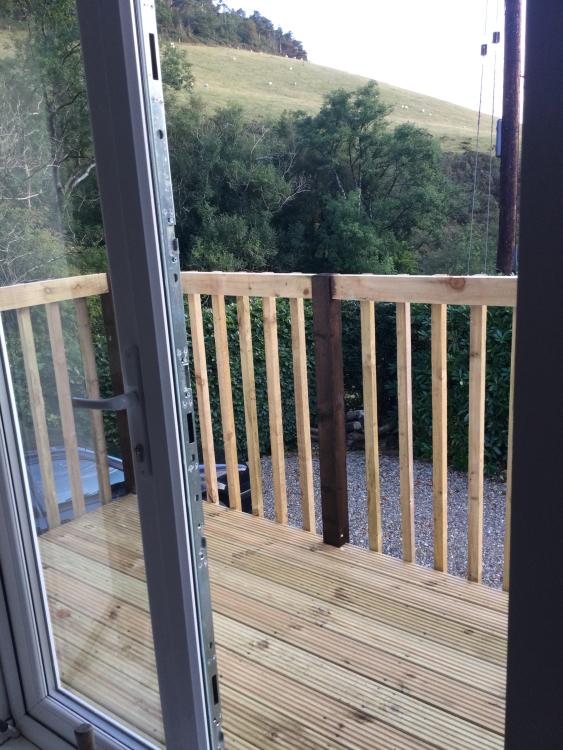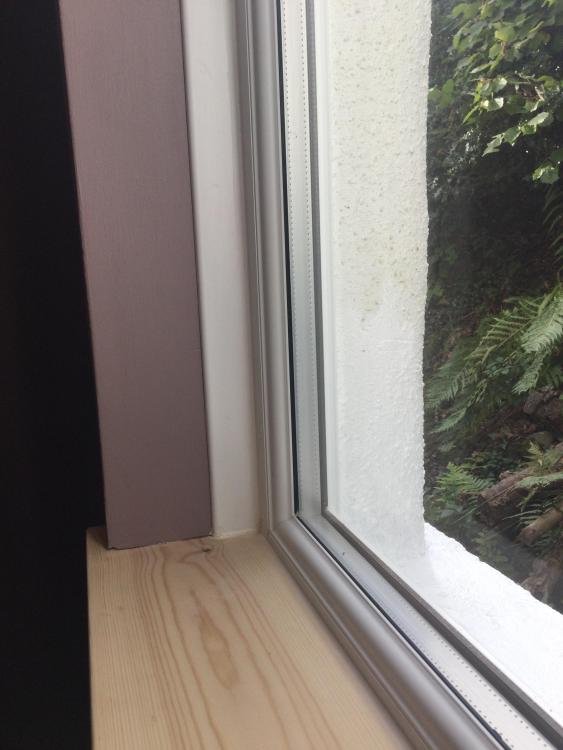Leaderboard
Popular Content
Showing content with the highest reputation on 09/19/22 in all areas
-
4 points
-
2 points
-
2 points
-
If I were a planning officer, I would sway heavily in favour of allowing a properly built replacement extension to replace that "not very pretty" conservatory. Knowing that if a nice replacement was refused, that ugly thing would just remain there. So on that basis I would just submit a planning application for what you want.2 points
-
I would still talk through these issues with the neighbours first, they may have been misled by architect/planning consultants. Nevertheless it does seem unlikely they are going to change the plans at this late stage. I am not aware of any templates, I would just look at examples in the local planning applications. Maybe focus on conservation areas where planning consultants are more likely to be involved. My in laws live in (Royal) Hillsborough, worth looking at some of the planning applications which seem to be approved despite widespread objections.2 points
-
Drill a 25mm pilot in the interior panel immediately prior to the wool insulation. Then get a piece of 20mm conduit 600mm long and cut an angled cut on one end. Rotate the conduit into the wool until it hits the inner face of the outer skin. Use a 1000mm sds 10mm bit fed through the conduit to make a pilot hole to outside ( it'll go through timber and brick ) with the conduit held still thus preventing the rotating drill and the wool from meeting. A second pair of hands to hold the conduit will help. Drill back in from outside with a 22mm drill, and then offer the conduit back in so it meets with the outside face, seal the conduit to the brick, and then pop your cable through. Remember to drill downhill from inside, and uphill from inside, eg to prevent any water ingress to the house interior. Seal both the inside and outside of the conduit at the interior to prevent drafts.2 points
-
DNO should have been petitioned to see if you could export the lot!! The DNO would probably have given you the green light for that tbh as you're not massively over the base threshold ( circa 3.6 iirc ). They ( DNO ) would ask YOU for the export limitation as part of your application to install more than that allowance, and I'm pretty sure your fitter cannot just dial a higher power setup down and deem this compliant, independently, afaik. I think you should disconnect this until you have all this scrutinised, understood and in proper order. Over 3.6 should have provoked your fitter into an immediate and automatic DNO application, before even taking a deposit or ordering equipment, let alone buying it and fitting / commissioning it. Adding AC coupled batteries ALSO needs to be part of that application, plus adding more panels. Only DC coupled PV panels and batteries on the DC side of a hybrid inverter evade this requirement. Sounds like a cause for concern to me, sorry.2 points
-
One we are looking out for, having originally planned to install a Samsung Gen6! Seems to have been released last week, so frustrating few details out there. Anyone else in a similar situation? EHS Mono, R32, High Temperature & Low Noise, Heat Pump | AE120BXYDEG/EU | Samsung Business UK1 point
-
Pragmatically I'm sure you are right, but precision is needed in these matters, because they trigger planning conditions (= obstacles to becoming greener) often imposed by officials who don't fully understand these matters (no criticism, they haven't been properly trained). Until I read this thread I was pretty confident I'd found a solution for my retrofit which won't annoy the neighbours or violate likely planning conditions, now i'm not sure. I'm not 'blaming' anybody commenting on this thread, its merely an observation that we need more precision (or standards) in specs if ashp is to I be mainstream, which I'm sure all on this forum know needs to happen!1 point
-
Onoff's bathroom thread was started in 2007, & is still going on apparantly. Some members have actually died during it. zh1 point
-
https://www.toolstation.com/safe-d-40-fire-rated-cable-clips/p92908?store=D6&utm_source=googleshopping&utm_medium=feed&utm_campaign=googleshoppingfeed&mkwid=_dm&pcrid=&pkw=&pmt=&gclid=EAIaIQobChMIs9C8tceh-gIVDpftCh10lgrSEAQYByABEgKVG_D_BwE&gclsrc=aw.ds may look odd without the trunking?1 point
-
You've clearly put thought into it, that's all you need to do. The boom will do all the work, you will hardly need a rake. Remember it's just footings, they don't have to be pretty. I used a boom on my footings and just stood around and watched the operator and had a chat, took photos. Part loads are when the mixer is not full ( usually 8m for a big lorry) so the cost is a bit higher but don't sweat , just keep an eye on the quantity towards the end of the pour and adjust as needed.1 point
-
Search for proof that it has been there for years and years. Don't take it down unless you don't care about replacing it or not. The act of applying is not that onerous. Familiarise yourself with what you need to provide what is required by your council. @markc has a good point about the pictures. However dimensions are important too. if you feel that the greenhouse lowers the roadside appeal with your neighbours properties then take further photos showing the street facing your home. Here's a good start to guide you as to what the planning department will want: https://www.stroud.gov.uk/environment/planning-and-building-control/apply-for-planning-permission/pre-application-advice-and-enquiries In my humble opinion, the feeling I have is that permission would not be given for several reasons and that the way I would approach is by giving rise to visual improvement which means not only replacing the greenhouse but also by having the external finishes exactly the same as the front of the rest of the building. I don't think you can be made to take it down because of how long it's been there and I'm sure others here will confirm this point. Good luck Marvin1 point
-
Every ‘professional’ fee seems to be about £1000 inc VAT. Get some more quotes.1 point
-
We revamped an en-suite and installed an electric blanket on a very thin sheet of insulation. Tiles above. It works very efficiently with timer and temperature control and stays warm long after it has gone off. It is a luxury though, for the sake of warm feet on a tiled floor. Why? It is nice and my wife loves it. Why not? Expensive. An electric booster to the towel rail is another welcome addition. Push the button and it dries the towels then switches off, and so saves the boiler running.1 point
-
With a boom pump you will be fine as long as the operator is good, they do this day in day out, they will know how to avoid breaking the shuttering.1 point
-
I would put an application in, can’t see it being refused and then you know everything is above board and there will be no complaints or objections (it’s amazing how complainers come out of nowhere when they see someone getting something nice1 point
-
Have you checked your installer is on the MCS database? Did you pay a lot for the installation? Did they show you an estimated annual yield for what you have paid for?1 point
-
Many thanks for this info Nick, I shall look into this.1 point
-
You also have the differences in cold bridging and total u-value. It's more difficult to eliminate cold bridging with IWI and current best practise now suggests going no lower than 0.30 in IWI. With EWI you can eliminate cold bridges because you're wrapping the whole house - you can also include plinth insulation below dpc and floor level - and you can install as thick insulation as you wish. With your existing cavity wall, yes there's a risk of air movement in the cavity but if you've got suspended timber floors, you're likely to be retrofiting floor insulation? Then you can do some detailing to seal up the cavity as best you can around the under floor vents, for example. In addition you have the option of filling the cavity with eps beads. Ewi is also very good when the weather gets hot. Ours remained nice and cool throughout the heatwaves we had this summer. My vote would be always be EWI unless absolutely not possible.1 point
-
Looks fine. When you pour put some against the shutters first to close the gap then move on somewhere else in the foundation. Come back to it later and it should have gone off enough to fill it up. ( as long as your shutters hold)1 point
-
So you should, at least he is trying (very 🤣) and with the help of those (some) here has made a good job of it, we are not all confident with DIY but he has got there (nearly).1 point
-
If you wanted to tone down those concrete pads, you could mix up some waterproof tile adhesive and cover it in the same gravel as the drive. Or get some offcuts of AstroTurf or paint with black masonary paint etc.1 point
-
Hi and welcome. Your BCO is right. All you need is here: https://www.planningportal.co.uk/permission/common-projects/conservatories/building-regulations There is no stipulation AFAICS as to what you can put in a 'conservatory'. Therefore the presence of kitchen paraphernalia is immaterial as long as you have the compliant doors, glazing, elecs and independednt heating 'system'.1 point
-
I have a foot in both camps. Our old house has a system on the original high rate FIT. I have no control on self usage etc, I just collect the FIT. Our new house, it was a bit of a sore point at the time. I tried to get a FIT system installed, but hit a brick will with needing an EPC of a certain rating. the house was an unfinished shell so that could not get an EPC. I tried in vain to get someone to issue a (possibly creative) EPC for the static caravan but just got the answer "they are exempt from and EPC" I tried to get someone to write a letter saying the solar PV was going on an exempt building so no EPC required, but nobody would. I tried contacting 2 of the DNO's directly to ask if my exempt building scenario would be accepted for FIT and both said probably not. So I could not get a FIT system on the new house and ended up leaving it until last and as cheap as possible and DIY. I do so well at self usage that it so far in nearly 4 years has only exported 330kWh which even if I could get paid 5p per unit, would have paid me £16.50 On the other hand it still pains me how much FIT it would have received, if only it had been allowed.1 point
-
we have very comfortable steps next to the driveway that lead from the pavement to the front door, so there is no chance a delivery person would choose the driveway over the steps. The driveway is fine to drive in and out of in rain. BCO wasn’t the last bit interested. We actually got our BCO certificate last week. i think the main issue is ice, but I think when it gets icy (not that common in London, maybe a week or two a year) we will just not use the driveway. But even with ice, I reckon one could manage by gritting it.1 point
-
How many FIT installs there are compared to non-FIT installs is certainly relevant... but it is not the heart of the argument. Let me sharpen up the questions: Question 1: Do domestic PV owners who export excess energy on average get market value for the electricity they export. To work that out, we'll have to find out what is the average price paid for a unit of exported solar PV, taking into account all of the people getting FIT, what FIT rate those people are on (not all the FIT rates are wonderful) and all the people not getting FIT. Then we compare the average price to the wholesale market price or, if you like, to the ahead prices that other solar producers are getting. It is possible that PV owners are getting compensated just fine on average. But that will be mostly due to FIT pulling the average up. Us lot who only get SEG are getting between 1p and 4p. We are either 'idiots for missing the boat' or 'forced to sell at below market value' depending how you want to read the situation. The more interesting question to me is this one: Question 2: Are domestic PV exporters compensated for their excess energy on the wholesale electricity market... or is the rate for excess energy calculate outside the market. As I understand it, FIT payments come from the green levy... Am I right or wrong about that? So that's outside the market. Where do SEG payments come from? I think it comes from the electricity suppliers on the principle that the SEG scheme says 'you've got to have at least one SEG rate and that SEG rate has to be >0'. The electricity suppliers calculate SEG not by looking at how much the electricity is worth in the market, they just pay as little as possible. (Except obviously the Octopus Agile tariff that tries to create a little electricity market.) This leads on to the most interesting question of all for me: Question 3: What happens to the actual market value of all of the exported solar? Who gets that? Me and Radian worked it out and we call it £260million, but could be wrong.1 point
-
Confused, you say you have to replace the cylinder, but seem concerned where to get an immersion for the old cylinder. Wouldn't you buy a new cylinder, it either come with immersion or doesn't, if it doesn't you ask for one to be supplied with new cylinder.1 point
-
One thing to add to Nick's excellent advice, the application you need is a G99 (not a G98) as your inverter is over 3.68kW. It doesn't matter that it's export limited. As Nick said, this has to be approved before connecting the system to the grid.1 point
-
OK. Batteries and panels on the DC side can be to any scale, but export limitation needs to be specified by the DNO and that instruction is followed by your installer. You would ( should ) have to tell the DNO of the max output from the hybrid ( 5kw in your case ) and have had permission for that before commencing. Is the rating for 5kw of PV and an additional (x)kw for batteries? Hybrids are usually dual input, so panels on one input and batteries on the other. Therefore if you split the panels to have a dual-string arrangement, where will your batteries connect? Sounds like your fitter has gone for the guaranteed sale with his own, self-dispensed means of mitigation, insuring against your possible refusal from the DNO and his loss of a sale. Worst case is the inverter going to default and throwing the full 5kw to the grid eg in the event of an equipment failure / malfunction. Time to go ask some awkward questions......1 point
-
If there is any shading, optimisers should have been fitted to get this to a standard that would pass MCS. What shading do you refer to?1 point
-
OK, thanks. OK, so a room off an otherwise already heated room? Or a doorway between the two spaces? Assuming 3 external walls, an adversely cold floor, and the height plus Velux. 200w/m2 is quite an aggressive in terms of UFH, so you'll likely get under and over shoot, exacerbated by the floor temp probe and the room stat both trying the manage that heat input to floor vs heat getting to space scenario ( so they'll be constantly squabbling tbh ). Heating the room ( space ) will require turning this on a good while before using the space, so you'll need a self-learning stat like the Warmup 3 or 4iE / other stat / controller that offers that feature aka "setback". These work out how long it takes from inputting energy into the floor to getting the air temp of that space to the required stat temp ( 20.5oC for eg ) and it then alters the switch on time to allow it to come on sooner than the timer is actually set for. It will be very slow to react, will overreact due to the minimal 'thermal content' of the heated emitter ( you wooden floor ) so really not advisable. You'd be FAR better off with a tiny oil filled radiator, which will heat that space up pretty much instantly and waste next to no heat. Hopefully I have helped you understand why this is a bad idea.1 point
-
My neighbours are not nearby. it's behind the kitchen and audible inside the house only if you have the kitchen window open. Although the noise is different, I don't feel it is any louder than the external oil boiler it replaced. Seems fine. No issues after the first week (it stopped after 24 hours with what turned out to be a blocked filter; a "known bug" as it turned out). It just works. The controller lacks a "holiday mode", which is a bit annoying. Yes, although I agree that the design of what it is feeding is more important than the heat pump. It does not seem to suffer from the high standby power consumption of some heat pumps.1 point
-
In the winter we worked in the house with a 2kW fan heater which kept the whole house comfortable. We didn't have the MVHR connected but found we didn't need windows open for ventilation. I think as there were only two of us working in the house and no other source of moisture and with the large total air volume, we didn't need a ventilation system.1 point
-
1 point
-
They don't even start MVHR units until you are painted - Passivhaus MVHR guidelines. You could easily mess up the heat exchanger and ducts for little or no gain. Get on with finishing the house, instead of jobs that shouldn't be done and certainly not started up until much later in the building process.1 point
-
Thank you. I would expect the SE to do that bit of it as why would it be that different from the ducting entering the house?1 point
-
It won’t be dark, it dries a very light grey colour. You really need the mosaic on top as the base is not very attractive, unless you can get a sponge finish on it.1 point
-
@pocster You are not 2 years too late for me though! And I didnt tag anyone, so not snubbing you by leaving you out!! 🥺0 points
-
0 points
-
What about offering to charge electric cars for the the local community? What about offering to do washing/drying or filling your oven with other people's casseroles? Rechargeable garden tools could also be charged. Then there could be a community large battery storage unit for the benefit of local residents? I know, I know I have been visiting cloud cuckoo land again!0 points



















